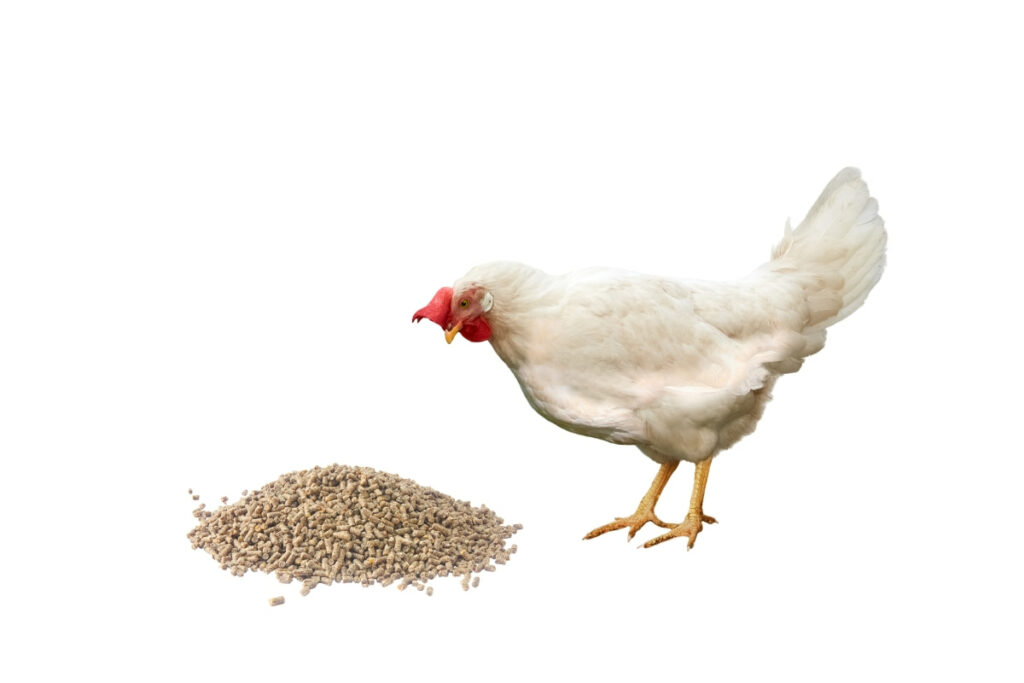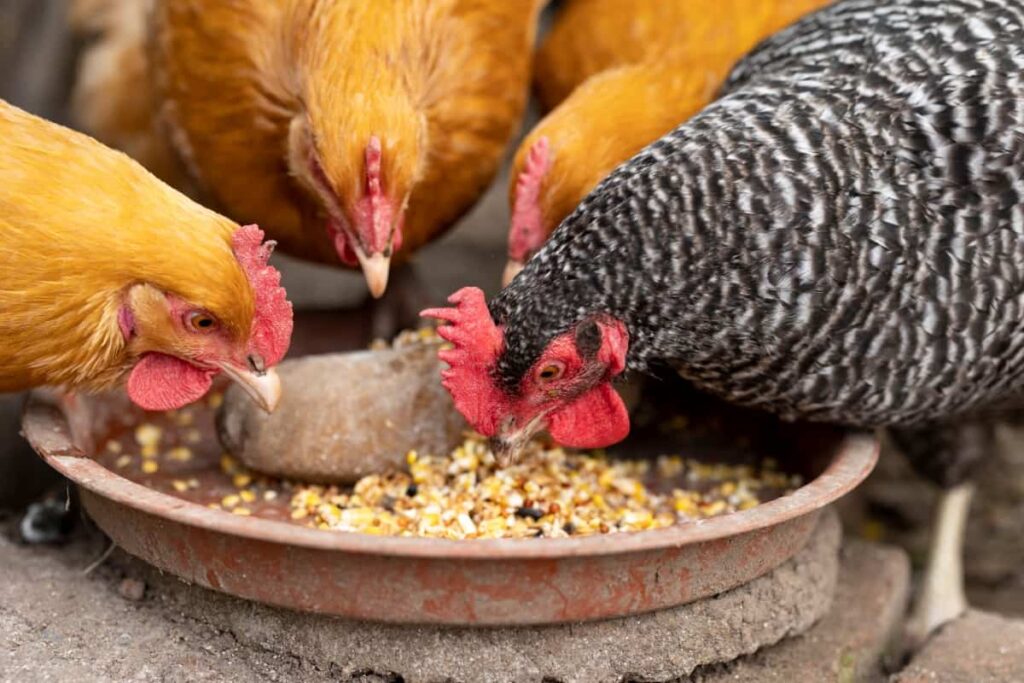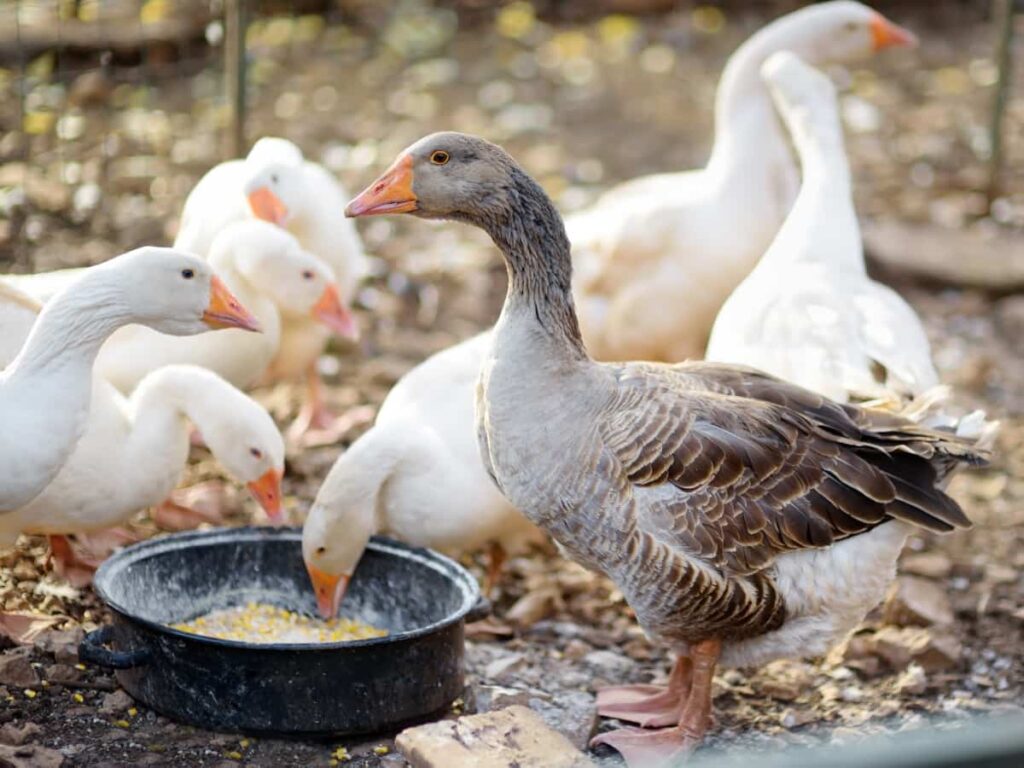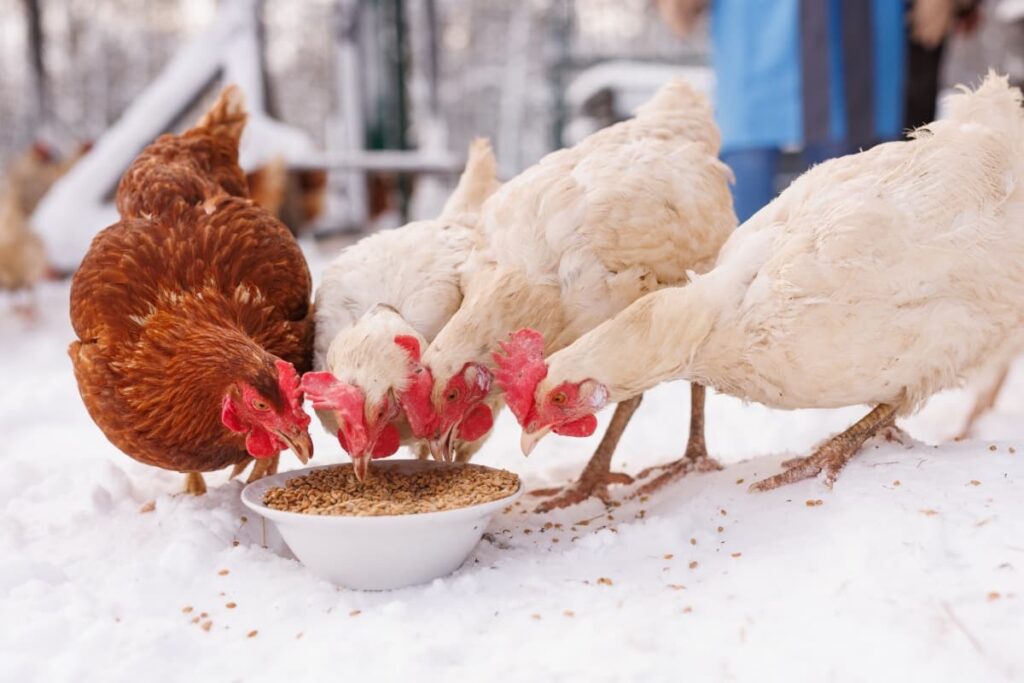Homemade feed formulations have gained popularity in recent years as they offer several benefits over commercially available feeds. Poultry refers to the domesticated birds that are raised for their meat, eggs, or feathers. It includes a wide range of bird species, such as chickens, turkeys, ducks, and geese. By formulating your poultry feed recipes, you can ensure that your birds receive optimal nutrition tailored to their specific needs at each stage of growth.

Homemade Feed Formulations for Poultry
Poultry Nutritional Requirements
Protein Needs
Poultry birds have unique nutritional needs that must be met through a balanced diet. Protein is an essential component of poultry feed as it plays a major role in muscle development, feather growth, and egg production. High-quality protein sources are commonly used to meet the protein needs of poultry.
Essential Vitamins
Poultry also require essential vitamins for proper growth and development. These vitamins include vitamin A for vision health, vitamin D for bone formation, vitamin E for immune function, and various B vitamins for energy metabolism.
Vital Minerals
Vital minerals like calcium and phosphorus are critical for strong bones and eggshell quality in laying hens. Other important minerals include iron for oxygen transport in the blood and zinc for reproductive functions.
Ingredient Selection
Grains and Cereals
Grains and cereals serve as a primary source of energy in the diet. Common options include corn, wheat, barley, and sorghum. These grains are affordable and readily available.
Protein-Rich Sources
Protein-rich sources are essential for the growth and development of poultry. Options like soybean meal, fish meal, and dried insects provide the necessary amino acids needed by birds. Incorporating these protein sources ensures optimal muscle development and overall health.
Fats and Oils
Fats and oils are important for enhancing energy density in poultry diets. Utilizing sources such as vegetable oil or animal fats can help meet the high-energy requirements of growing chickens or laying hens.
Fiber and Greens
Including fiber and greens in homemade feed helps promote good digestion and gut health in poultry. Adding ingredients like alfalfa meal or fresh vegetables provides essential nutrients while aiding in proper digestion.
Supplements
Supplements play a vital role in ensuring that your homemade feed meets all nutritional requirements. Calcium carbonate is often added to support strong eggshell formation in laying hens, while mineral premixes contribute to overall bird health.
Protein Sources and Balancing
Protein Sources for Poultry
Protein is a crucial component in poultry feed as it provides the amino acids necessary for the growth, development, and overall health of the birds. When formulating homemade feed for poultry, it’s important to select protein-rich sources that can meet their nutritional requirements. Various protein sources can be used in poultry feed formulations. Common options include soybean meal, fishmeal, meat and bone meal, and dried insects.
Balancing Amino Acids
Balancing amino acids is key to ensuring that poultry receives all the essential nutrients they need from their diet. While some protein sources may be rich in certain amino acids, they may lack others. It’s also important to consider factors such as digestibility and palatability when selecting protein sources for your homemade poultry feed formulations.
Energy Sources and Grains
Selecting Energy-Rich Grains
Energy-rich grains play a vital role in meeting the energy requirements of poultry birds throughout their growth stages. Corn is one of the most commonly used energy-rich grains in poultry feed formulations. Other options include barley, oats, and wheat, all of which contain varying levels of nutrients and can be used to provide a balanced diet for your flock.
Energy Content and Requirements
It’s important to consider the energy content and requirements specific to your poultry species when selecting grains. Different breeds have different metabolic rates and activity levels, so you’ll need to tailor the grain selection accordingly. By carefully choosing energy-rich grains based on your flock’s specific needs, you can ensure that they receive optimal nutrition throughout their development stages.
In case you missed it: Cheapest Ways to Make Chicken Feed at Home: Explained with Ingredients for Layers and Broilers

Formulating Starter Feed
Composition for Baby Chickens
Formulating the perfect starter feed for baby chickens is crucial to their growth and development. The composition of the feed should meet their nutritional needs and provide them with a solid foundation. Protein is essential for young chickens. It helps support muscle development and overall growth. In addition to protein, starter feeds should also contain essential vitamins and minerals.
Mixing Ratios and Guidelines
When it comes to mixing ratios, it’s recommended to start with about 20-24% protein content in the feed for baby chickens up until 6 weeks of age. As the birds grow older, you can decrease the protein content while increasing energy-rich grains like corn or wheat. Guidelines for feeding include providing fresh water at all times and offering small amounts of feed multiple times a day.
Formulating Grower Feed
Nutrient Requirements for Growing Birds
Growing birds require a balanced diet that provides them with some important nutrients to support healthy growth and development. This includes an adequate amount of protein, vitamins, minerals, and energy sources. Protein is particularly important during this stage as it helps in muscle development and overall body composition. In addition to protein, other essential vitamins and minerals should be included in the grower feed formulation.
Adjusting Formulations for Growth
As your birds continue to grow, adjusting their feed formulations becomes necessary. Regular monitoring of their growth progress can help you make these adjustments accordingly. Remember that each batch of growing birds may have slightly different needs based on factors like breed or environment.
Formulating Layer Feed
Composition for Laying Hens
When it comes to formulating feed for laying hens, it’s important to consider their unique nutritional needs. Laying hens require a balanced diet that supports the production of quality eggs while also maintaining their overall health. By taking into account the nutritional requirements of laying hens and carefully selecting the appropriate ingredients, you can create a homemade layer feed that meets all their dietary needs.
Calcium and Phosphorus Considerations
Laying hens need an adequate supply of calcium in their diets to ensure strong eggshells. Another essential nutrient for laying hens is phosphorus. Phosphorus plays a vital role in bone development and eggshell formation. Ensuring a well-balanced diet will promote optimal performance in terms of egg production and overall hen health.
Homemade Supplements and Additives
Natural Supplements
Natural supplements like herbs and botanicals can offer various benefits to poultry. For example, garlic has antimicrobial properties that help boost the immune system. Oregano is known for its antioxidant properties that support gut health. And turmeric has anti-inflammatory effects that promote overall wellness.
Minerals and Vitamins
Minerals such as calcium and phosphorus are important for proper bone development in laying hens. Incorporating ingredients like crushed eggshells or oyster shells into their feed can ensure they receive adequate amounts of these vital minerals.
Vitamins are also crucial for poultry health. Vitamin A promotes good vision and reproductive function, while vitamin E promotes as an antioxidant, protecting cells from damage. Including ingredients like carrots or leafy greens in your homemade feed can naturally provide these essential vitamins.
In case you missed it: Cassava as Livestock and Poultry Feed: Exploring Benefits with Different Animals

Storage and Preservation
Proper Ingredient Storage
It’s important to store grains, cereals, protein sources, and other ingredients in a cool and dry place. This helps maintain their nutritional value and prevents mold or insect infestations. Make sure to use airtight containers or bins that are labeled with the date of purchase.
Shelf-Life Considerations
Different ingredients have varying shelf lives, so it’s essential to check expiration dates regularly. Discard any expired or spoiled ingredients immediately, as they can negatively impact your poultry’s health.
Preventing Contamination
Preventing contamination is paramount in maintaining safe homemade poultry feed formulations. Keep all areas where you handle ingredients clean and sanitized. Avoid cross-contamination by using utensils for different ingredients.
Feeding Strategies and Best Practices
Feeding Methods and Frequency
There are various ways to feed your poultry, such as ad libitum feeding or restricted feeding. Ad libitum feeding means providing constant access to feed throughout the day, allowing birds to eat at their own pace. On the other hand, restricted feeding involves providing specific portions of feed at scheduled intervals.
Monitoring Poultry Health
Monitoring poultry health is another essential aspect of feeding strategies. One way to monitor poultry health is by conducting regular visual inspections. Take the time to observe your birds closely, looking for any signs of illness such as lethargy, reduced appetite, abnormal droppings, or changes in behavior. Another important aspect of monitoring poultry health is maintaining a clean and hygienic environment.
Adjusting Feeds as Needed
Additionally, adjusting feeds as needed is vital for meeting your flock’s changing nutritional requirements over time. For example, growing birds will have different nutrient needs compared to laying hens or broilers nearing slaughter age. Stay informed about appropriate formulations and adjust accordingly based on their developmental stage.
In case you missed it: Organic Chicken Feed: For Starter, Grower, Broiler, and Layer DIY Organic Chicken Feed Recipes

Conclusion
Poultry farming is not only popular on commercial farms but also among small-scale farmers and even backyard enthusiasts. Homemade feed formulations for poultry give you flexibility in ingredient selection based on availability and cost-effectiveness.
- Sheep Farming Business Plan for Beginners
- Aquaponic Farming at Home: A Step-By-Step Guide
- Profitable Village Farming Business Ideas in 2024
- High-Yield Aquaculture: Fast-Growing Fish for Farming
- Effective Fish Pond Construction Techniques for Beginners
- Irrigation and Water Management in Pineapple Farming
- Blossom to Harvest: Mastering Flowering and Pollination in Papaya Farming
- Pig Fattening Essentials: From Selection to Sale for Beginners
- Raising Wagyu Cattle: A Complete Guide for Premium Beef Production
